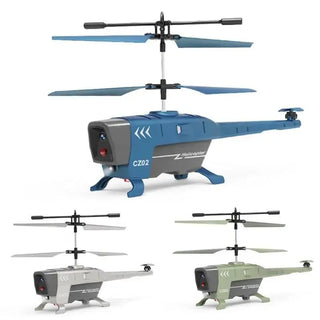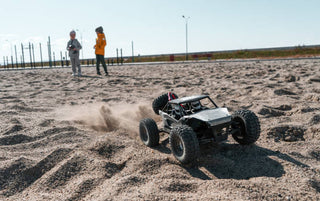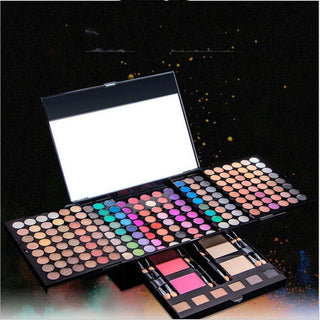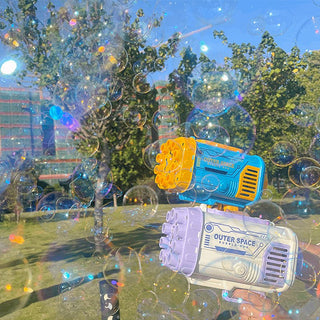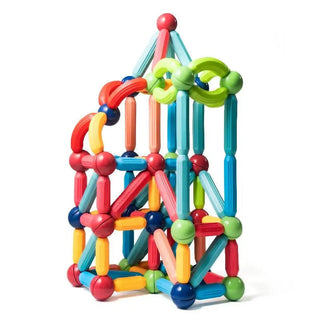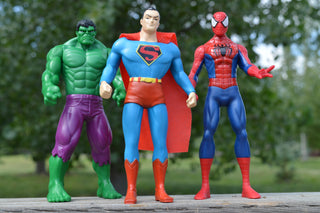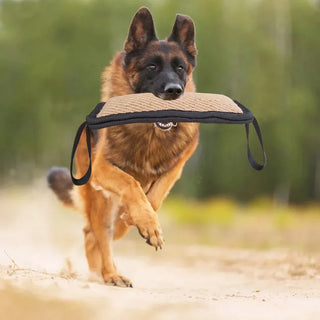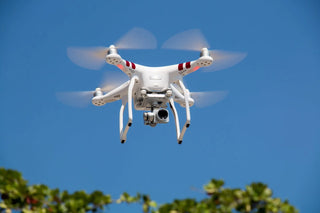Spotting things in the dark can be tricky, especially when it's something small and fast like a drone. But don't worry, figuring out how to spot a police drone at night isn't as hard as it sounds. We're going to break down what to look for, from their lights and sounds to how they move, so you'll be much better at telling what's flying overhead in the dark.
Key Takeaways
- Police drones often have blue and red lights, kind of like police cars on the ground.
- Listen for a distinct buzzing sound; drones make a specific noise that's different from other aircraft.
- Police drones tend to hover or fly in patterns, unlike regular planes or helicopters.
- Binoculars or night vision gear can really help you see drones better after dark.
- Weather conditions, like fog or clear skies, can make it easier or harder to spot a drone.
Understanding Drone Light Patterns
At night, drones often rely on lights for navigation and visibility. Understanding these light patterns can be super helpful in spotting them. It's like learning a secret code of the skies! Let's break down what to look for.
Common Light Colors and Their Meanings
Drone lights aren't just for show; they actually communicate important information. Typically, drones use different colors to indicate their orientation and status. Here's a quick rundown:
- White: Usually indicates the front of the drone.
- Red: Generally signifies the rear of the drone.
- Green: Often used on the sides or to indicate GPS lock or a stable hover. You might see drone lights change from red to green.
- Blue: Sometimes used for side lights or to signal a specific mode.
Distinguishing Flashing Sequences
Beyond the colors, pay attention to how the lights are flashing. The sequence can tell you a lot about what the drone is doing. For example:
- Rapid Flashing: Could mean the drone has a low battery or is experiencing some kind of error.
- Slow, Steady Blinking: Might indicate that the drone is in a particular mode, like ready to fly or recording video.
- Alternating Colors: Some drones use alternating colors to make them more visible or to signal a change in direction.
Think of it like Morse code, but for drones. A drone might hover, then dart off in a different direction. This agility is a hallmark of small drones. Many have programmable light patterns, so you might see the lights blink in a certain sequence rather than the regular navigation light pattern of an aircraft.
Identifying Police Drone Lights
Police drones sometimes have unique light configurations to set them apart from civilian drones. These might include:
- Brighter Lights: Law enforcement drones often use brighter lights for better visibility during nighttime operations.
- Specific Color Combinations: Some police drones use specific color combinations, like flashing red and blue, to signal their presence.
- Infrared Lights: Police drones may also use infrared (IR) lights, which are invisible to the naked eye but can be seen with night vision equipment. Spotting police surveillance drones can be tricky.
It's important to remember that drone light patterns can vary depending on the manufacturer, model, and purpose of the drone. However, by understanding the basics of color and flashing sequences, you can greatly improve your chances of spotting a drone at night.
Acoustic Signatures of Drones
Recognizing the Distinctive Drone Hum
Okay, so you're trying to figure out if that weird noise in the sky is a drone? The first thing to listen for is a distinctive hum. It's not like a plane, which has a deep rumble. Drones, especially the smaller ones, make a higher-pitched buzzing or humming sound. Think of it like a swarm of angry bees, or maybe a souped-up mosquito.
- The sound comes from the rapidly spinning propellers.
- The pitch can vary depending on the size and type of drone.
- Ambient noise can make it harder to hear, so find a quiet spot.
If you're with someone, get them to listen too. Sometimes, one person picks up the sound better than another, depending on where you're standing and what's blocking the sound. It's like a low-tech triangulation method.
Pitch and Frequency Variations
The pitch and frequency of a drone's sound can tell you a lot. Smaller drones tend to have a higher-pitched whine, while larger ones might have a lower, more resonant hum. Also, the sound can change depending on what the drone is doing. If it's hovering, the pitch might be steady. If it's moving quickly or changing direction, you might hear variations in the frequency. This is because the motors are working harder or changing speed. You can use acoustic sensors to detect drone noises.
Consider these points:
- A rising and falling pitch could indicate the drone is ascending or descending.
- Changes in frequency might mean the drone is accelerating or decelerating.
- Listen for subtle shifts in the sound to get a better sense of the drone's movements.
Estimating Proximity by Sound
One of the trickiest things is figuring out how far away a drone is just by listening. Generally, the louder the sound, the closer it is. But there are other factors to consider. Wind can carry the sound, making it seem closer than it is. Obstacles like buildings or trees can block the sound, making it seem farther away. Also, smaller drones have quieter motors, so they might be harder to hear at a distance. Here's a simple guide:
| Sound Level | Estimated Proximity | Considerations |
|---|---|---|
| Loud | Very Close | Likely within a few dozen yards. |
| Moderate | Close | Possibly within a hundred yards. |
| Faint | Distant | Could be several hundred yards away or farther. |
Remember that these are just estimates. The best way to get a sense of the drone's location is to combine what you hear with what you see (if you can see anything) and any other information you have. If you hear a distinct buzzing or humming sound, it might be a drone nearby.
Observing Drone Movement Patterns
Erratic Flight Versus Steady Trajectories
One of the easiest ways to tell a drone apart from other things in the sky is how it moves. Drones are capable of movements that planes and helicopters just can't do. They can stop in mid-air, move sideways, and even fly backward. A plane always needs to keep moving forward to stay in the air, but a drone doesn't have that problem. This difference in movement is a big clue.
Hovering Behavior as a Key Indicator
If you see something in the sky that's just staying in one spot for a long time, it's probably a drone. Planes and helicopters usually don't hover unless they're landing or taking off. Drones, on the other hand, can hover for extended periods. This makes them really useful for surveillance, but it also makes them easier to spot. Prolonged hovering over a particular spot could be a sign of police surveillance drones.
Comparing Drone Movement to Other Aircraft
Drones don't move like regular airplanes. Airplanes follow set paths, especially at night, because they're usually going from one airport to another. Drones can be more unpredictable. They might hover in one spot, then quickly move in a different direction. They can even zigzag. This agility is a key difference. Consumer drones often exhibit erratic or agile movements, while military drones tend to fly in steady, systematic patterns. Here's a quick comparison:
| Feature | Airplane/Helicopter | Drone |
|---|---|---|
| Typical Movement | Forward motion, set flight paths | Hovering, quick changes in direction |
| Flight Pattern | Predictable, following air routes | Unpredictable, can change direction quickly |
| Hovering | Rare, usually only during takeoff or landing | Common, can hover for extended periods |
Spotting a drone at night can be tricky, but paying attention to how it moves is a big help. If it's hovering or moving in ways that a plane or helicopter can't, there's a good chance it's a drone. Remember to consider the context – where you are, what's happening around you – to make a better guess.
Utilizing Tools for Nighttime Detection
Sometimes, your eyes just aren't enough, especially when it's dark. Thankfully, there are some tools that can really help you spot drones at night. Let's take a look at a few.
The Role of Binoculars and Telescopes
Binoculars are a great first step. They amplify your vision, making it easier to spot faint lights in the distance. You might suddenly see the outline of the drone or the separate red/green lights on it, confirming it’s not a star. A telescope can do the same for a more distant object, though it’s harder to track a moving drone with a telescope’s narrow field of view. Still, a telescope could show you details like the form of the drone if it’s not too fast-moving. Using these tools, observers have noted seeing the arms of a quadcopter or the blinking pattern more clearly. Just be careful not to mistake lens flares or internal reflections in your optics for additional mystery lights. If you're serious about spotting, these are good investments. They can really enhance detection capabilities.
Thermal Cameras for Enhanced Visibility
Thermal cameras are a game-changer. They don't rely on visible light; instead, they detect heat signatures. Drones, especially those with running motors and electronics, emit heat. This means a thermal camera can pick them up even if they're trying to stay hidden in the dark. They can help you identify drones that may not be visible to the naked eye. Night vision equipment can help you spot drones that have dim lights or no visible lights.
Smartphone Apps and Their Capabilities
Believe it or not, your smartphone can also help. There are apps that claim to enhance night vision using your phone's camera, though results can vary. Some apps analyze the sky and identify potential drone activity based on light patterns or movement. While not as effective as dedicated equipment, they're a convenient option to have. If you're very determined, even a low-light camera or a camera with a long exposure setting can catch the streak of a moving drone at night, which you might review after.
Combining multiple methods can really up your chances of spotting a drone. For example, you could have a motion-activated camera pointing at the sky, a sound detector running, and an RF scanner all together. It's all about layering your defenses, so to speak.
Differentiating Police Drones from Civilian Drones

Unique Light Configurations of Law Enforcement Drones
One of the easiest ways to tell a police drone from a civilian drone at night is by its lights. While civilian drones often have white, red, and green lights for navigation, police drones frequently incorporate blue and red lights, mimicking those of police vehicles. These lights are not just for show; they serve as a clear identifier, especially during nighttime operations. It's like seeing a police car in the sky. Regular drones might have flashing lights, but the combination of red and blue is a strong indicator of law enforcement. Keep an eye out for specific flashing patterns too, as these can be unique to police drones.
Operational Characteristics of Police Surveillance Drones
Police drones are often used for different purposes than civilian drones, and this affects how they operate. For example, you might see a police drone hovering for extended periods over a specific area, like a large public event or a potential crime scene. This kind of traffic monitoring is less common with civilian drones, which are more likely to be in motion, capturing footage or inspecting property. Police drones also tend to have longer flight times, allowing them to stay airborne for longer surveillance missions. Civilian drones usually have shorter battery lives, limiting their operational time. Another thing to consider is the altitude; police drones might fly at higher altitudes for broader surveillance, while civilian drones often stay lower to the ground.
Purpose and Use of Police Drones
Police departments use drones for a variety of reasons, including:
- Surveillance: Monitoring large events, crime scenes, and high-risk areas.
- Search and Rescue: Locating missing persons, especially in difficult terrain.
- Accident Reconstruction: Gathering aerial imagery for detailed accident analysis.
Police drones are equipped with advanced technology like thermal imaging and high-definition cameras. This allows them to gather detailed information that would be difficult or unsafe to collect manually. They can also be deployed quickly to incident locations, often arriving before officers on the ground. This capability provides valuable real-time information to responders, improving response times and situational awareness.
Civilian drones, on the other hand, are typically used for recreational purposes, photography, or commercial applications like real estate and inspections. The table below summarizes the key differences:
| Feature | Police Drones | Civilian Drones |
|---|---|---|
| Primary Use | Surveillance, search and rescue, law enforcement | Recreation, photography, commercial purposes |
| Lighting | Red and blue lights often present | White, red, and green lights common |
| Flight Time | Longer flight times | Shorter flight times |
| Operational Altitude | Higher altitudes for broader surveillance | Lower altitudes for specific tasks |
Impact of Weather Conditions on Visibility
Weather plays a huge role in how well you can spot a drone at night. It's not just about how dark it is; things like fog, rain, and even wind can really mess with your ability to see or hear a drone. Let's break down how different weather conditions affect drone spotting.
How Fog and Rain Affect Drone Spotting
Fog and rain are probably the biggest culprits when it comes to reducing visibility. Fog can completely obscure a drone, making it nearly impossible to see until it's right on top of you. Rain, especially heavy rain, has a similar effect. Light rain might let you see the drone's lights, but they'll be distorted and much dimmer. The density of the fog or the intensity of the rain directly impacts how far away you can detect a drone.
Here's a quick rundown:
- Fog: Very poor visibility. You might hear it before you see it.
- Light Rain: Poor visibility. Lights are visible but distorted.
- Heavy Rain: Very poor visibility. Almost impossible to see the drone.
I remember one time I was out trying to photograph the night sky, and a drone flew by. It was a foggy night, and I didn't see it until it was practically overhead. It just appeared out of nowhere! It was a good reminder of how much weather can affect visibility.
Clear Nights and Enhanced Detection
On the flip side, clear nights offer the best conditions for spotting drones. With no obstructions in the air, drone lights are easily visible from a distance. The contrast between the dark sky and the bright lights makes them stand out. Plus, sound travels well on clear nights, so you're more likely to hear a drone before you see it. If you want to learn more about Cloudflare Ray ID, you can find more information online.
Wind and Its Influence on Drone Stability
Wind doesn't directly block your view of a drone, but it can affect its stability. A drone fighting against the wind might wobble or move erratically, which can make its lights appear to dance around. This can make it harder to pinpoint its exact location. Also, wind noise can make it harder to hear the drone. Here are some things to consider:
- Light Winds: Minor impact on stability, slight light movement.
- Moderate Winds: Noticeable wobble, harder to track visually.
- Strong Winds: Significant instability, increased noise interference.
In summary, weather conditions are a key factor in how easy it is to spot a drone at night. Always consider the weather when you're trying to detect drones, and adjust your expectations accordingly. Understanding police surveillance drones can also help you better prepare for different scenarios.
Personal Accounts and Experiences
Testimonials from Drone Enthusiasts
Drone enthusiasts often have compelling stories about spotting drones at night. Some are hobbyists who enjoy watching the night sky, while others are more concerned about privacy. One common theme is the element of surprise. You might be stargazing and suddenly notice a blinking light moving in an unusual way. It's not a plane, not a helicopter... what is it? That's the question that gets people hooked. The experience can range from curiosity to concern, depending on the drone's behavior and location.
Real-World Encounters with Night Drones
I remember one night, I was walking my dog when I saw a drone hovering over a neighbor's house. It was late, and the drone had a bright light that was quite intrusive. I wasn't sure what to do, so I just kept walking, but it definitely made me uneasy. Another time, I was camping and saw a drone flying near the treeline. It was equipped with what looked like a thermal camera. It was a bit unsettling to think someone was watching us, even if they didn't mean any harm. These encounters highlight the need to understand drone light patterns and their implications.
Lessons Learned from Public Sightings
Public sightings of drones at night offer some important lessons. First, it's crucial to document what you see. Note the time, location, drone's appearance, and behavior. This information can be helpful if you need to report the sighting to authorities. Second, be aware of your surroundings. Drones can be anywhere, so it's good to be observant. Finally, understand your rights. Knowing the laws regarding drone operation in your area can help you respond appropriately if you encounter a drone that's violating those laws.
It's important to remember that not all drones are malicious. Many are used for legitimate purposes, such as search and rescue or infrastructure inspection. However, it's still important to be aware and informed, so you can distinguish between harmless activity and potential privacy violations.
Here's a quick summary of what to do if you spot a drone at night:
- Stay calm.
- Observe the drone's behavior.
- Document the sighting.
- Report any suspicious activity.
Want to read more about what people have gone through? Head over to our website to check out all the amazing stories. You'll find lots of real-life experiences there.
Wrapping It Up
So, there you have it. Figuring out if that light in the night sky is a police drone, or just some hobbyist, doesn't have to be a total mystery. It's all about knowing what to look for and listen for. Keep an eye out for those specific light patterns and colors, and definitely pay attention to any weird buzzing sounds. Knowing these things can help you feel a bit more in control, and maybe even a little less freaked out, when you spot something flying around after dark. Stay aware, and you'll be able to tell what's what up there.
Frequently Asked Questions
How can I tell if there's a drone flying at night?
To spot a drone in the dark, look for its lights. They usually have a white light in front and a red light in the back. Sometimes, you might see green or blue lights on the sides. Also, listen for a buzzing sound, which is a common sign of a drone nearby.
What makes police drones different from regular drones?
Police drones often have special blue and red lights, much like police cars. They might also flash their lights in unique patterns. These drones are built to stay in the air for longer periods, which helps them watch over areas for a long time.
Does a drone hovering mean it's watching me?
When a drone is hovering in one spot for a long time, especially over a certain area, it could be a sign it's watching something. Regular drones usually fly around more or move from place to place.
Are there any tools that can help me spot drones at night?
Yes, tools like binoculars can help you see drone lights more clearly at night. Thermal cameras can show you the drone's heat signature, even if its lights are off. There are also phone apps that can help detect drones by listening for their sounds or looking for their signals.
How does weather affect my ability to see drones at night?
Bad weather like fog or heavy rain can make it very hard to see drone lights or hear their sounds. Strong winds can also make drones fly differently, which might make them harder to identify. Clear nights are the best for spotting them.
What should I do if I think a drone is spying on me?
If you think a drone is being used to spy on you, you can contact your local police department. They can tell you if the drone activity is legal or if they need to look into it further.

